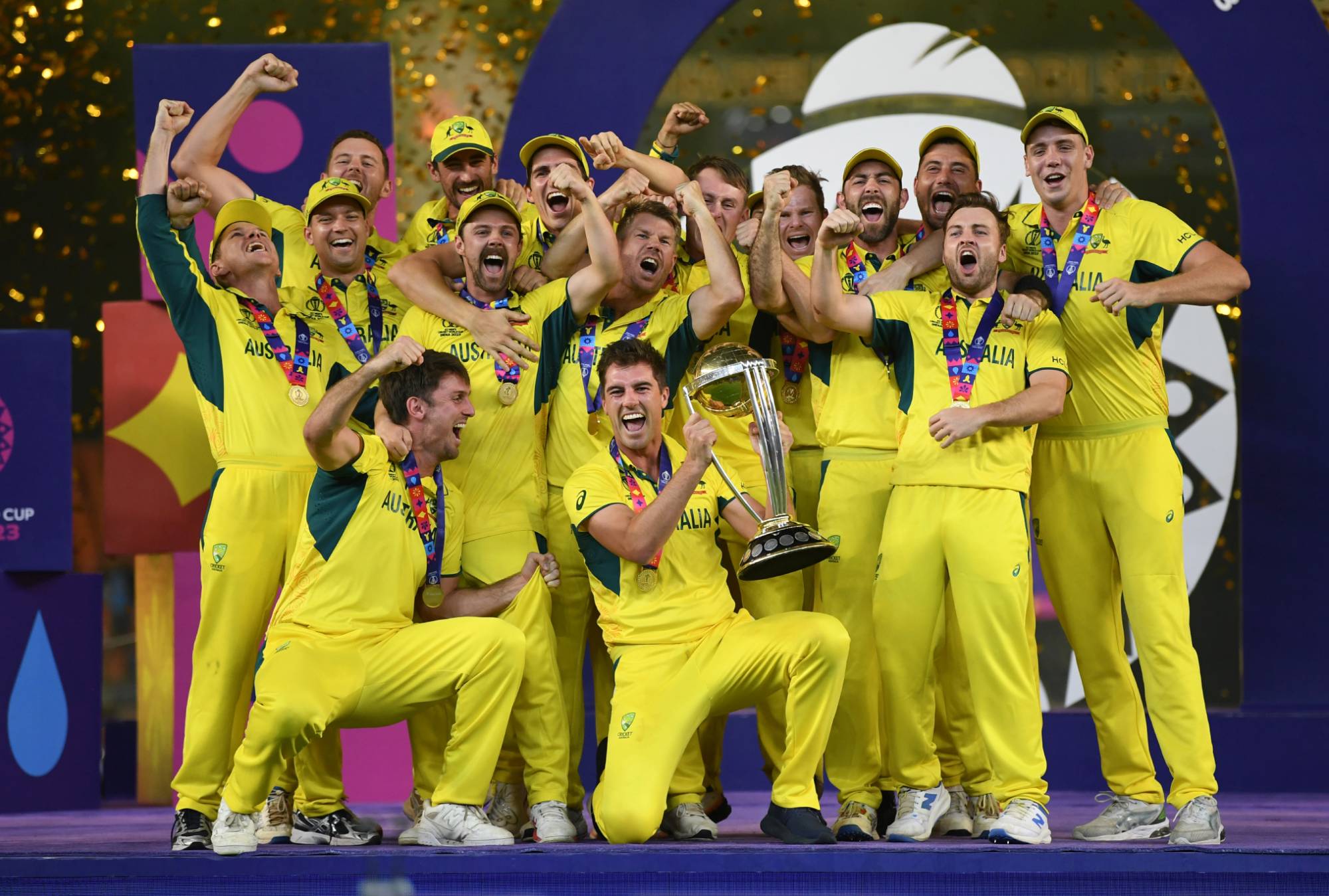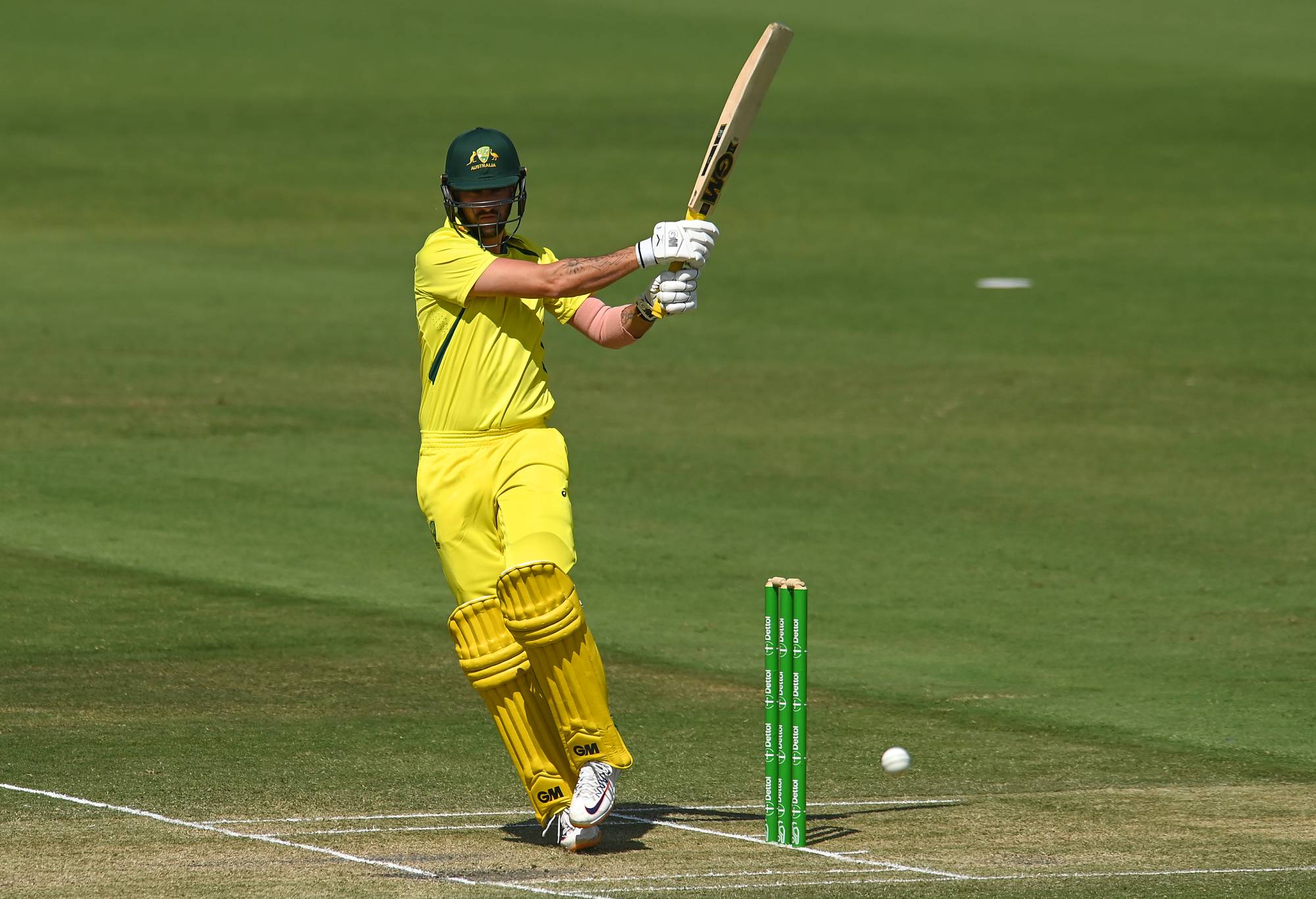When Australia head to South Africa in 2027 to mount their ODI World Cup defence, just three players from Sunday’s final are likely to be on the plane crossing the Indian Ocean.
Travis Head, Josh Inglis and Marnus Labuschagne are the only players young enough or not burdened by a massive workload to be in the frame in four years time.
Winning the Cup final by slaying the Indian giant at Ahmedabad was an unexpected bonus for this ageing Australian squad to turn a very good year into a great one.
The Border-Gavaskar Trophy series loss in India was the only major blemish on a hectic campaign of winning the World Test Championship final into retaining the Ashes on enemy soil.
For captain Pat Cummins and the senior players in the team like Steve Smith, Mitchell Starc, Josh Hazlewood, David Warner, Glenn Maxwell, Mitchell Marsh and Adam Zampa, it lifts them into a similar stratosphere to the legendary teams of the past although it would be hard to argue they have been as dominant across formats as the ones led by Steve Waugh and Ricky Ponting a generation ago.

(Photo by Gareth Copley/Getty Images)
It used to be the case that teams, particularly Australia, would plan for the ODI World Cup years in advance and structure their build-up with military precision.
Careers would be ended by selectors ahead of time, just ask both Waugh twins, because the side needed to get plenty of time on the field together before the all-important showpiece tournament.
But the 2023 Aussie side turned that on its head. They of course had been gearing up for the tournament in India for a long time but it was almost an afterthought for a wider squad that was more focused on ending their Test hoodoo in India, taking out the five-day world crown and ensuring England did not Bazball their way back into possession of the Ashes.
It seemed a fait accompli that Cummins would relinquish the ODI captaincy after this World Cup but after showing he could still lead the team to victory even despite limited preparation or time as skipper, he now has the prerogative to stick around for however long he wants.
The surprise trophy success should not mean, however, that he doesn’t scale back his heavy burden of captaining two national outfits while being a frontline fast bowler in all three.
Cummins, Starc and Hazlewood have indicated that they have no desire to hang up their baggy green caps anytime soon so a white-ball format or two need to be culled, likely after next year’s T20 World Cup, jointly hosted by the West Indies and the US.
Head being slightly younger than Marsh, more durable and with more captaincy experience under his belt makes him the ideal candidate to replace Cummins in the leadership role.
Warner has probably played his last 50-over match for Australia but will probably be given the golden handshake of being retained for the T20 showpiece event next year after retiring from the Test team after the upcoming three-match series against Pakistan in Perth, Melbourne and his home turf of Sydney.
Smith is another player who won’t be around for the 2027 World Cup so it serves little to no point for him to remain in the ODI set-up.
Maxwell and Zampa don’t need to be shipped out the door straight away but a succession plan needs to be adopted in the near future so younger all-rounders like Cameron Green and Aaron Hardie and spin prospects Tanveer Sangha and Todd Murphy are given sufficient time to find their feet at international level.
All-rounder Marcus Stoinis, at 34 and after another middling World Cup campaign, has had his time in the green and gold and should focus (or be told to) on the T20 franchise circuit where his hit-and-miss exploits are better suited.
It was hard to fathom why Sean Abbott was in the ODI squad when he was never going to get picked ahead of Starc, Cummins and Hazlewood and, approaching his 32nd birthday after 18 matches since his debut in 2014, his time in the national white-ball set-up should also be drawing to a close.

Matt Short. (Photo by Albert Perez/Getty Images)
Alex Carey’s chances of a recall to the ODI side aren’t over and Inglis hardly set the world on fire during the Cup after getting the keeping gig following the the opening loss but if the South Australian Test incumbent doesn’t get a look-in again soon, the 32-year-old may be better off focusing on the red-ball arena.
Matt Short was given a taste of international white-ball cricket prior to the World Cup and looks to be the first cab off the rank to come into the ODI batting line-up.
Marsh looks the safest best to partner Head at the top of the order but the West Australian is another player who has blown out 32 candles and whether his body can withstand the rigours of another four-year cycle to make the next ODI World Cup is questionable.
In the long term, Short is shortening to be given a chance to establish himself as a top-order power hitter.
Jake Fraser-McGurk has a lot of fans in the upper echelons of Cricket Australia as a star of the future and after his record-breaking 29-ball ton at Marsh Cup level recently, he is on the path to higher honours but he needs to show a lot more consistency to truly be in the frame.
Green and Hardie, along with their West Australian teammate Ashton Turner, are players who can provide the foundation for a successful middle order while Will Sutherland, the leading wicket-taker in the Marsh Cup this season, appears destined to be more of a bowling all-rounder.
Jhye Richardson is the quick that Australia would love to be able to rely upon to be the spearhead of the attack in the post-Big Three era but his ongoing injury struggles have continually put the brakes on his ascension to that role.
Left-armer Spencer Johnson is still a raw prospect at the elite level and Lance Morris could also become a strike weapon for Australia but will never have a low economy rate.
The workhorse role should go to Nathan Ellis, who has shown in his brief forays into the Australian white-ball sides that he has the guile and change-ups to make up for a lack of air speed.
There does not need to be a dramatic overhaul of the Australian ODI squad now that the players are basking in the afterglow of their World Cup triumph but the selectors also can’t afford to let their ageing stars get too much longer in the tooth before refreshing the side.
Despite constant speculation that one-day cricket is dying, the anguish that has engulfed India and the jubilation from Australian fans shows that World Cups still have significant meaning.
In many ways, India losing the final is great for the future of the ODI format. The BCCI will be much less likely to pull the pin on its investment in the 50-over game now that they have lost yet another tournament despite being red-hot favourites.






























































































